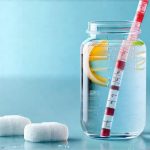Nausea is an incredibly debilitating symptom, impacting quality of life and often hindering everyday activities. It’s rarely just about the stomach; nausea frequently intertwines with disruptions in fluid balance and electrolyte levels within the body. Many individuals who experience chronic or recurrent nausea – whether due to migraines, gastrointestinal issues, medication side effects, pregnancy, or anxiety – find that even small fluctuations in hydration can dramatically worsen their symptoms. Understanding the complex relationship between these factors is crucial for effective management, moving beyond simply trying to suppress the feeling and towards proactively supporting the body’s natural ability to cope with discomfort. This isn’t about finding a ‘quick fix’, but rather developing sustainable habits that promote resilience against nausea triggers. You can learn more about fluid balance and meal spacing for better comfort.
The common mistake in addressing nausea is often focusing solely on stopping the vomiting or reducing the sensation itself. While anti-nausea medications can be helpful, they don’t address the underlying physiological imbalances that contribute to the problem. When we vomit – or even experience prolonged periods of reduced intake due to nausea – we lose more than just stomach contents. We lose vital fluids and electrolytes like sodium, potassium, chloride, and magnesium. These electrolytes are essential for nerve function, muscle contraction (including the digestive system), and maintaining proper fluid balance within cells. A disruption in this delicate equilibrium can exacerbate nausea, creating a vicious cycle where dehydration worsens symptoms, leading to more vomiting or reduced intake, further depleting electrolyte levels. Therefore, strategically balancing both fluids and electrolytes is paramount for those prone to nausea. If you’re looking for relief from discomfort, consider herbal treatments like ginger, peppermint and chamomile.
The Interplay of Fluids and Electrolytes in Nausea
Nausea often signals a disruption in the body’s homeostatic mechanisms – its efforts to maintain internal stability. Vomiting, while unpleasant, is sometimes the body’s attempt to rid itself of something it perceives as harmful. However, even without actual vomiting, prolonged nausea can lead to decreased oral intake and subsequent dehydration. Dehydration isn’t simply about feeling thirsty; it impacts cellular function across the entire body. Electrolytes are dissolved minerals that carry an electric charge, essential for numerous bodily processes. They regulate fluid distribution between cells, influence nerve impulses, and support muscle function. When electrolyte levels become imbalanced due to fluid loss (or even shifts in fluid balance), it can directly contribute to or worsen nausea.
Consider this: the digestive system relies on coordinated muscle contractions – controlled by electrolytes – to move food along. Dehydration and electrolyte imbalances disrupt these contractions, leading to sluggish digestion, bloating, and potentially increased feelings of nausea. Similarly, nerve signals from the gut to the brain are influenced by electrolyte concentrations; an imbalance can misfire signals, increasing the perception of discomfort. It’s a complex system where everything is interconnected. Maintaining adequate hydration is only part of the equation; it’s equally vital to replenish the electrolytes lost through vomiting or reduced intake. Understanding the benefits and limitations of probiotics can also be helpful for digestion.
This isn’t just about avoiding extreme dehydration either. Even mild dehydration – well before you feel thirsty – can affect cognitive function, increase fatigue, and lower your tolerance for discomfort, all of which can contribute to a heightened experience of nausea. The goal is proactive hydration coupled with mindful electrolyte replenishment rather than reactive intervention once symptoms are already severe.
Identifying Electrolyte Imbalances
Recognizing the signs of an electrolyte imbalance can be tricky because many overlap with general nausea symptoms. However, paying attention to specific indicators can provide valuable clues. – Muscle cramps or weakness: Particularly in legs or arms, these can signal low potassium or magnesium levels. – Fatigue and lethargy: A persistent feeling of tiredness beyond what’s expected can indicate sodium depletion. – Confusion or irritability: Significant electrolyte imbalances can affect brain function, leading to cognitive changes. – Headache: Often accompanies dehydration and electrolyte loss. – Changes in heart rate: Irregular heartbeat or palpitations may suggest potassium or magnesium deficiencies.
It is important to note that these symptoms are not exclusive to electrolyte imbalance and could indicate other medical conditions. If you experience severe symptoms like confusion, irregular heartbeat, or significant muscle weakness, seeking immediate medical attention is crucial. Self-diagnosing and self-treating can be dangerous. However, if you consistently experience nausea along with any of the milder symptoms listed above, exploring ways to support electrolyte balance alongside fluid intake may prove beneficial. You should also understand why carbonated drinks, caffeine, and alcohol can worsen your condition.
Practical Strategies for Electrolyte Replenishment
Replacing lost electrolytes doesn’t always require specialized sports drinks loaded with sugar. In fact, these can sometimes exacerbate nausea in sensitive individuals. There are several gentler and more effective approaches: 1. Oral Rehydration Solutions (ORS): These commercially available solutions are formulated to provide a balanced mix of electrolytes and fluids. Choose low-sugar options if possible. 2. Electrolyte-Rich Foods: Incorporating foods naturally high in electrolytes into your diet can be helpful. Bananas are excellent sources of potassium, while leafy green vegetables offer magnesium. Coconut water is also a natural source of electrolytes (though it’s lower in sodium). 3. Homemade Electrolyte Drinks: You can create a simple electrolyte drink using water, a pinch of sea salt (for sodium), a squeeze of lemon or lime juice (for flavor and potassium), and a small amount of honey or maple syrup for taste (optional).
The key is to start slowly and monitor your tolerance. Introducing large amounts of fluids or electrolytes too quickly can sometimes trigger nausea in sensitive individuals. Sip on small amounts frequently throughout the day, rather than trying to gulp down large volumes at once. Also, pay attention to how different sources affect your individual symptoms – what works for one person may not work for another. You might also explore step-by-step strategies to reduce stress and improve gut function.
Hydration Beyond Water: Smart Fluid Choices
While water is essential, it isn’t always the most effective choice when battling nausea. Plain water can sometimes feel “empty” and doesn’t provide any electrolytes. Consider these alternatives: – Ginger ale or ginger tea: Ginger has natural anti-nausea properties and can soothe the stomach. Ensure you choose a brand with real ginger rather than artificial flavoring. – Clear broths: Provide both fluids and sodium, which is often depleted during vomiting. – Herbal teas: Chamomile, peppermint, and lemon balm teas can be calming and may help reduce nausea symptoms. Avoid overly strong or caffeinated teas. – Diluted fruit juices: Offer some electrolytes and a pleasant taste, but dilute them with water to avoid excessive sugar intake.
It’s also important to avoid certain fluids that can worsen nausea, such as sugary drinks, carbonated beverages (besides ginger ale in small amounts), alcohol, and caffeinated beverages. These can irritate the stomach or disrupt fluid balance. Finally, remember that hydration isn’t just about what you drink; it’s also about food. Incorporating hydrating foods like watermelon, cucumber, and soups into your diet can contribute to overall fluid intake.
Long-Term Management & Preventative Measures
Balancing fluids and electrolytes isn’t a one-time fix; it’s an ongoing process for individuals prone to nausea. The goal is to establish healthy habits that minimize the risk of imbalances and proactively support digestive function. This often involves identifying personal triggers – specific foods, smells, stressors, or activities that tend to induce nausea – and developing strategies to manage them. Keeping a symptom diary can be incredibly helpful in pinpointing these patterns.
Beyond trigger management, prioritizing consistent hydration throughout the day, even on days when you’re feeling well, is essential. Don’t wait until you feel thirsty to drink; sip on fluids regularly. Consider incorporating electrolyte-rich foods into your daily diet as a preventative measure. This isn’t about restrictive dieting or deprivation; it’s about making small, sustainable changes that support overall health and wellbeing. The more resilient your body is generally, the better equipped it will be to handle periods of nausea.
Ultimately, managing nausea effectively requires a holistic approach that addresses both the physical and emotional aspects of the condition. Stress management techniques like deep breathing exercises, meditation, or yoga can help reduce anxiety-related nausea. Similarly, getting enough sleep and engaging in regular gentle exercise can improve overall health and resilience. Remember to consult with your healthcare provider to rule out any underlying medical conditions and discuss appropriate treatment options. This article provides general information only and should not be considered medical advice. You can also learn how to stay hydrated when nausea prevents fluid intake.


















